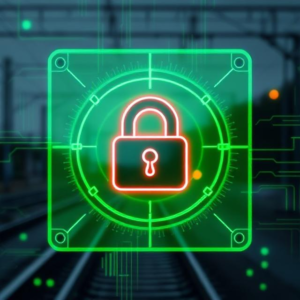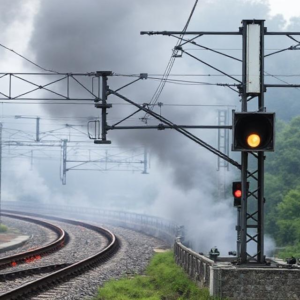What Are Safety Protocols?
Safety protocols are rules or standards that define how communication systems in railways must operate to ensure safety, reliability, and security. In railways, communication is critical because it helps control train movements, signals, and ensures everything runs smoothly and safely. These protocols make sure that important messages (like train positions, speed limits, emergency warnings, etc.) are delivered properly and on time to avoid accidents or delays.

Why Are Safety Protocols Important in Railways?
Railways are complex systems, and many things need to communicate with each other:
- Trains communicate with control centers and signals to stay on track.
- Control centers manage train movements to prevent collisions.
- Trackside equipment and signal lights send instructions to trains.
If the communication fails or is delayed, it could lead to accidents. Safety protocols ensure that the system works perfectly and that messages are always delivered correctly.
Key Safety Protocols in Railway Communication
- Clear and Secure Communication
- What it means: All messages exchanged between trains, control centers, and trackside equipment must be clear (without confusion) and secure (protected from hackers or errors).
- How it helps: If a train gets a clear signal to stop, it will stop. If the signal is unclear, the train might not stop and could crash. Secure communication ensures no one can tamper with these signals.
- Redundancy (Backup Systems)
- What it means: Railway systems use backup systems to ensure communication works even if something fails. For example, if one signal system fails, another one can take over immediately.
- How it helps: If there’s a technical problem, the backup system steps in, so there’s no disruption in communication. This prevents accidents due to system failures.
- Real-Time Monitoring and Alerts
- What it means: All trains, signals, and equipment are constantly monitored. If something goes wrong, like a train going too fast or a signal malfunctioning, an alert is sent to the operators.
- How it helps: This real-time monitoring allows operators to respond instantly to problems (like slowing down trains if there’s a malfunction or stopping a train if a signal fails). This reduces accidents.
- Train Protection Systems (ATP)
- What it means: Automatic Train Protection (ATP) systems use communication protocols to automatically stop or slow down a train if it is in danger. It works by monitoring the train’s speed and position in relation to signals.
- How it helps: If a train doesn’t stop at a red signal, the ATP system will intervene and slow the train down or stop it to avoid a crash.
- Signal Reliability
- What it means: The signals telling trains to stop, go, or slow down need to be reliable. Communication between signals and trains should never be delayed or interrupted.
- How it helps: Reliable signaling ensures that trains always follow the correct instructions. If a signal tells a train to stop, the train will stop, preventing accidents.
- Interoperability Between Different Systems
- What it means: Different parts of the railway network (in different countries, cities, or companies) need to work together. This is called interoperability.
- How it helps: If a train moves across different regions with different signaling systems, the protocols ensure that the train can still communicate and follow the rules of each region without problems.
- Data Integrity
- What it means: The information being exchanged between trains, signals, and control centers must be correct and accurate.
- How it helps: Accurate data ensures that operators know exactly where the train is, how fast it’s going, and if there’s any issue. This helps make the right decisions, preventing accidents caused by incorrect data.
- Security (Preventing Hacking)
- What it means: Communication systems are protected from hacking or interference. There are encryption and authentication measures to make sure only authorized systems can communicate.
- How it helps: Security ensures that no one can hack into the railway system and send false information (like telling a train to go when it should stop). This protects passengers, staff, and the whole railway network from sabotage.
- Communication Protocol Standards (IEC, TETRA, GSM-R)
- What it means: There are international standards and rules for how communication should happen in railway systems. Some of the most commonly used standards are:
- GSM-R (Global System for Mobile Communications – Railway): A system for secure communication between trains and control centers.
- TETRA (Terrestrial Trunked Radio): A communication system used for voice and data transmission in safety-critical applications.
- IEC 61375 (Train Communication Network): A standard for communication between train components and external devices.
- How it helps: These standardized protocols ensure that all railway systems around the world communicate in the same way, making them more reliable and compatible.
- What it means: There are international standards and rules for how communication should happen in railway systems. Some of the most commonly used standards are:
- Safety in Emergency Situations
- What it means: In case of an emergency (like a fire or derailment), communication systems need to work immediately and effectively.
- How it helps: If something goes wrong, the system ensures that emergency signals can be sent quickly to stop trains, warn operators, and alert emergency teams. This minimizes the risks and helps prevent a disaster.
Examples of Safety Protocols in Action:
- Emergency Stop Signal: If a train driver misses a red signal, the Automatic Train Protection (ATP) system will stop the train. This is done through communication between the train and trackside equipment.
- Trackside Communication: Trackside equipment like signals and switches send real-time messages to trains, telling them whether they need to slow down or stop. If there’s a problem, the system will alert operators immediately.
- Backup Systems: If the main communication system fails, a backup system will immediately take over, ensuring that trains can still be safely managed.
Conclusion
Safety protocols for railway communication systems ensure that trains, signals, and control centers work together to keep everything safe. They focus on:
- Clear and secure communication.
- Real-time alerts for issues or emergencies.
- Reliable, fast, and accurate data exchange.
- Protecting the system from errors or security threats.
By using these protocols, the railway system can prevent accidents, ensure smooth operations, and keep passengers safe. It’s all about making sure that communication happens correctly, securely, and without delays.
Keywords: Safety Protocols, Railway











